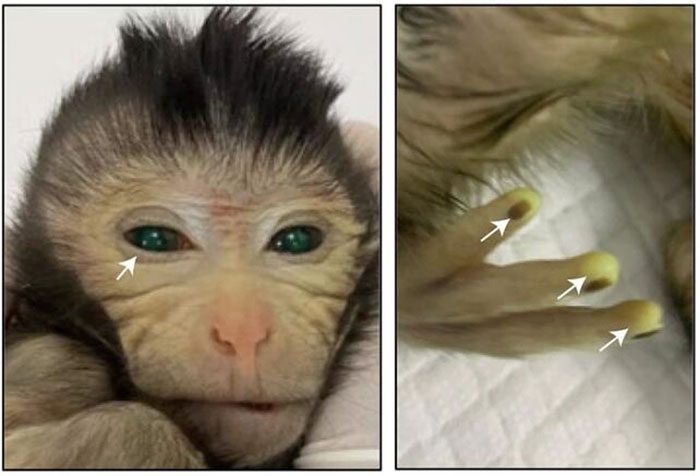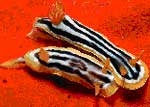Scientists in China have announced the birth of a unique primate species that is unlike any previously recorded.
The male monkey, born in a laboratory, is the product of an unprecedented method.
In this experiment, researchers used pluripotent stem cells from two genetically distinct fertilized eggs of the same monkey species to create a new long-tailed macaque (scientific name: Macaca fascicularis).

Fluorescent green and yellow cells found in the eyes and fingers of the three-day-old monkey. (Photo: Cell).
This has resulted in the monkey possessing “unmatched” characteristics, such as cat-like green eyes and glowing yellow fingertips.
According to researchers from China and the UK, this is not the first artificially created monkey species formed from the fusion of multiple fertilized eggs.
However, it appears to be the species with the most complex mixed genetic structure. Specifically, within the body of this unique animal, the cells and tissues are derived from two separate stem cell lines.
Among the 26 different types of tissues measured by scientists, the contribution of the additional donated stem cells ranged from 21% to 92%. This figure far exceeds previous results, where experimental monkeys had only a donation cell ratio of 0.1% to 4.5%.
Zhen Liu, the lead author of the study, stated that this breakthrough could help scientists gain a better understanding of the early stages of stem cell differentiation in primates, which has been studied much less thoroughly than in mice.
Nevertheless, the current health status of the monkey remains a pressing issue. Historically, monkeys born in this manner have often only lived for a few days due to their extremely weak immune systems.





















































